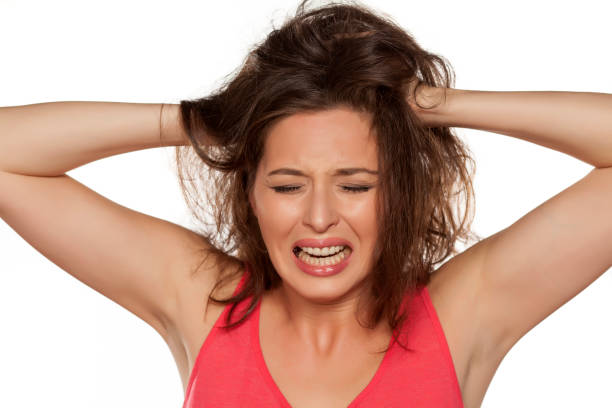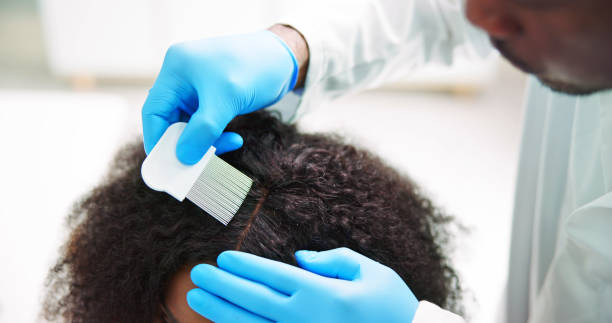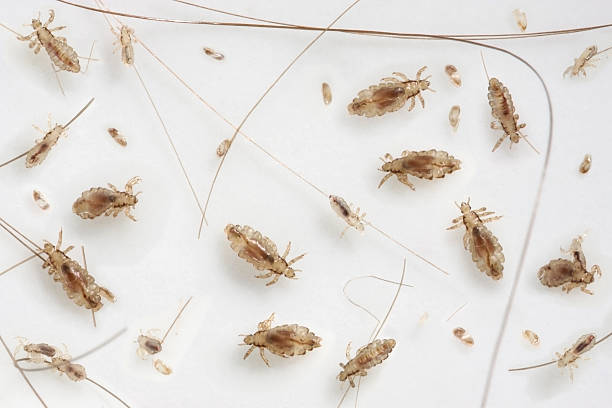Hair lice are tiny parasites that live on human hair. They feed on blood from their host and can sometimes be found on eyelashes, eyebrows, and anywhere there’s hair. An infestation from hair lice can be a disturbing and irritating problem because they are very contagious and tough to get rid of. Their bites can make a person’s scalp itchy and inflamed, and scratching it may lead to infection.
However, hair lice do not spread other diseases, and they do not have much to do with personal hygiene. If you come in contact with someone with hair lice or use their belongings, like combs, hats, wigs, etc., there’s a high chance of getting infested by the parasite. Therefore, you must learn how to treat hair lice so you can tackle the problem as soon as it arises.
See also: 8 Fantastic Benefits of Cloves Sexually
What Are The Symptoms Of Head Lice?
Itching is the most typical sign of head lice, especially in the areas closest to your ears, on your neck, and on the back of your head where lice are more likely to reside. Head lice symptoms include:
- Sensation of something moving (tickling) in your hair.
- Itching.
- Cuts and sores from scratching.
- Inability to sleep.
- Since head lice are most active at night, sleep disturbances may result.
- Your head’s skin can become broken from constant itching, which can result in an infection.
How Can Someone Get Lice On Their Head?
Although head lice are unable to fly or jump, they spread from person to person through direct contact or the sharing of combs, brushes, and hats with other infected individuals. Head lice are not caused by poor hygiene. Head lice can, albeit rarely, be transferred by personal items such as hats, towels, sheets, and hairbrushes.
Humans cannot contract head lice from animals or pets.
How to Treat Hair Lice
People have tried many types of treatment for hair lice; some have even tried insecticide, which is very dangerous, but sometimes people do these things due to fear and panic after they find lice on their hair. You don’t have to be scared; here are some effective treatments that can help you remove lice permanently.

1. Contain The Problem
Immediately after you notice lice on your hair, the first thing you should do is to make sure it does not spread, especially when you live with other people. So follow these steps to contain the problem and stop it from spreading.
- Check other members of your household for lice.
- Avoid hugging or other close contact.
- Do not lay on people’s beds or use their hair accessories.
- Consider disinfecting your entire house.
- Wash all the items that have been in contact with your hair, like hats, comb, and pillow case, with hot water.
- Sometimes before you notice your hair lice, it must have been there for a while, so consider getting treatment with every member of your household to prevent re-infestation.
2. Consider Cutting Your Hair
When planning on how to treat hair lice, you should consider cutting your hair. Lice usually attach themselves to a person’s hair and feed from the scalp; therefore, whatever treatment you apply, you must get it to the scalp. So cutting your hair may seem like an extreme solution, but it makes your treatment faster, and the hair lice can even go with the hair since there’s nothing to attach to.
However, it is not a must that you cut your hair; if you think you can handle the treatment when your hair is long and full, then go for it.
3. Over-the-counter Remedies
Many over-the-counter hair lice treatments usually come as a shampoo; they are effective if you follow the instructions correctly, and you must also check out the active ingredients to ensure you are not allergic to them.
Some over-the-counter hair lice treatments have pyrethrins as an active ingredient, so if you are allergic to such ingredients, avoid the hair lice treatment that contains them. However, some OTC treatments are meant for specific stages of hair lice, and it is usually written in the description, so get what suits your needs.
4. Natural Remedies
Aside from OTC hair lice treatment, you can also choose natural home remedies to combat hair lice; the materials needed for this process are as follows:
- Shampoo
- Conditioner
- Carrier oils such as olive oil, coconut oil, etc.
- Essential oils such as rosemary oil, tea tree oil, citronella oil, eucalyptus oil, and peppermint oil.
- Shower cap.
- Blow dryer.
- Nit comb.
- A clean towel.
If you have all these things ready, follow these simple steps to get rid of lice naturally.
- Mix the essential and carrier oils of choice and apply them to your hair.
- Cover the hair with the shower cap or wrap it for at least one hour or longer; you can also use a dryer for at least 30 minutes.
- Wash out the oil with shampoo and use conditioner on the hair.
- Blow dry the hair a bit and strengthen it.
- Divide the hair into small sections and use the nit comb to comb it out; wipe the nit comb with a clean towel and repeat it on the entire hair about three times till you can no longer see any lice or nit.
- Keep using this nit comb at least three times a week for the best results.

5. Use Relaxer
If your hair is already relaxed or you don’t mind relaxing your natural hair, then use a relaxer on it and ensure you apply it to the base of the hair. The chemical will get rid of any remaining lice.
See also: DNA Test Price
Anyone can get hair lice because they are very contagious, so having lice doesn’t mean a person is unhealthy or has terrible hygiene. Also, lice are not typically dangerous or life-threatening, but having them can be uncomfortable and irritating, so prompt treatment is essential. Therefore, if you have been looking for how to treat hair lice, the treatment methods we have discussed so far will help you eradicate them completely.
How Can I Avoid Getting Head Lice?
The best defense against lice is to avoid coming into physical contact with an infected person and to never share combs, brushes, towels, or hats with anyone else. Examining and treating every member of your household who comes into contact with someone who has lice also helps.
Spend some time educating your kids about head lice and giving them advice on:
- Avoid head-to-head contact when playing.
- Do not exchange headgear with other people, such as hats.
If you know of someone in your home who has head lice, you can stop them from spreading by:
- Using hot water to wash clothing, bedding, and textiles, and then using a hot cycle in the dryer to dry them.
- Items such as hats and stuffed animals that are not suitable for washing or drying should be sealed in a plastic bag and left for a period of two weeks.
- Soaking combs and brushes in hot water for ten minutes or longer after usage.
- Vacuuming any places in your house where a head lice-infected person may have sat or played, including around furniture.
Conclusion
Head lice are a brief irritant that can be effectively treated with medicated shampoos, lotions, or creams. Head lice may require multiple treatments to completely eradicate, so be sure to adhere to directions on treatment packaging or as suggested by your physician.
In order to stop your child from harming their scalp’s skin, get in touch with your healthcare provider if your child has lice and is unable to stop scratching.



